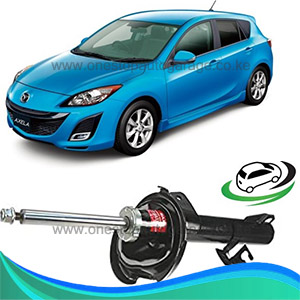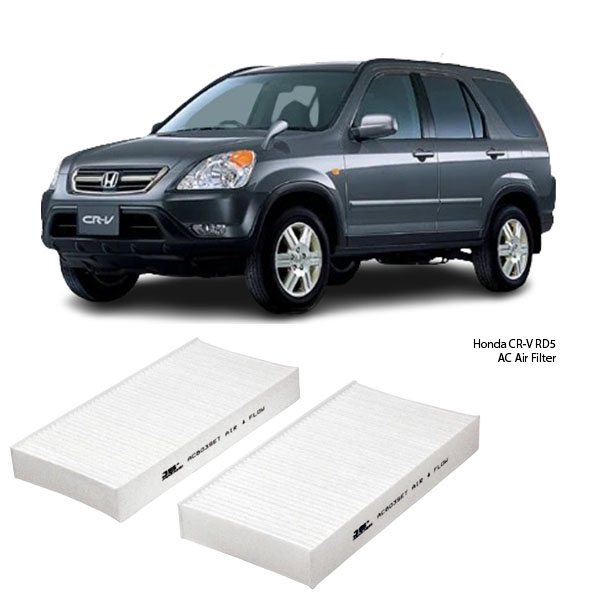-13%
Get Honda CR-V RD5 Cabin Filter Assy AC-803SET in Kenya
The cabin air filter assembly is a critical component in a vehicle’s heating, ventilation, and air conditioning (HVAC) system. It plays a vital role in filtering out pollutants, allergens, dust, and other airborne contaminants before they enter the vehicle’s interior. A properly functioning cabin air filter ensures a clean and comfortable environment for passengers while also protecting the HVAC system from clogging and inefficiency.
In this detailed guide, we will explore the cabin air filter assembly in depth, including its function, types, benefits, signs of failure, and maintenance best practices.
What is a Cabin Air Filter Assembly?
A cabin air filter assembly is a unit that includes the cabin air filter, its housing, and the structural components that ensure it fits correctly within the vehicle’s ventilation system. The purpose of this assembly is to allow filtered, clean air to enter the passenger compartment while keeping out dirt, dust, pollen, exhaust fumes, and other harmful pollutants.
The assembly typically consists of:
- Cabin Air Filter – A filtration media that captures airborne contaminants.
- Filter Housing – A plastic or metal casing that secures the filter in place.
- Air Duct Connection Points – Openings that facilitate the flow of filtered air into the HVAC system and then into the cabin.
Depending on the vehicle, the cabin air filter assembly may be located behind the glove compartment, under the dashboard, or near the engine firewall.
How Does a Cabin Air Filter Work?
When you turn on your air conditioning or heating system, outside air is drawn into the car through the ventilation system. Before this air reaches the interior, it must pass through the cabin air filter housed within the cabin air filter assembly.
Filtration Process
- Air Intake – The HVAC system pulls in outside air.
- Filtration – The air flows through the cabin air filter, where dust, dirt, pollen, bacteria, and other contaminants are trapped.
- Clean Air Circulation – The purified air is then directed into the vehicle’s interior through the air vents.
Types of Cabin Air Filters
Cabin air filters come in various types, each designed to provide different levels of filtration and air quality improvement.
1. Particulate Cabin Air Filters
- Designed to remove solid contaminants such as dust, pollen, and dirt.
- Provides basic air filtration without eliminating odors or gases.
- Common in standard vehicles with simple HVAC filtration needs.
2. Activated Carbon Cabin Air Filters
- Contains a layer of activated carbon that absorbs odors, smoke, and harmful gases like exhaust fumes.
- More effective in urban environments where pollution levels are high.
- Helps neutralize unpleasant smells inside the vehicle.
3. HEPA Cabin Air Filters
- High-Efficiency Particulate Air (HEPA) filters remove up to 99.97% of microscopic particles such as bacteria, viruses, and fine dust.
- Ideal for people with allergies or respiratory conditions.
- Used in high-end or luxury vehicles for superior air filtration.
4. Electrostatic Cabin Air Filters
- Uses an electrostatic charge to attract and trap airborne contaminants.
- Enhances filtration efficiency without restricting airflow.
- Often combined with other filter technologies for optimal performance.
Benefits of a Cabin Air Filter Assembly
A well-maintained cabin air filter assembly provides multiple advantages that enhance driving comfort and overall vehicle performance.
1. Improved Air Quality
- Blocks dust, pollen, mold spores, bacteria, and fine particles.
- Ensures passengers breathe clean, fresh air.
2. Reduces Allergy and Respiratory Issues
- Helps prevent sneezing, coughing, and irritation caused by airborne allergens.
- Particularly beneficial for asthma sufferers and individuals with respiratory sensitivities.
3. Protects the HVAC System
- Prevents dirt and debris from clogging the evaporator and blower motor.
- Reduces wear and tear on the air conditioning and heating components.
4. Eliminates Unpleasant Odors
- Activated carbon filters neutralize odors from pollution, exhaust fumes, and cigarette smoke.
- Prevents musty smells caused by mold or bacteria buildup.
5. Enhances Driving Comfort
- Ensures proper airflow through the vents, making cooling and heating more effective.
- Reduces windshield fogging by maintaining a clear ventilation system.
Signs of a Failing Cabin Air Filter
Over time, the cabin air filter gets clogged with dirt and debris, reducing its effectiveness. Watch for these warning signs:
1. Weak Airflow from Vents
- If you notice reduced airflow when using the AC or heater, the filter may be clogged.
2. Persistent Bad Odors
- A dirty filter can trap bacteria and mold, causing a musty or unpleasant smell inside the car.
3. Increased Allergy Symptoms
- A failing filter won’t properly remove allergens, leading to more sneezing, coughing, and irritation while driving.
4. Fogged-Up Windows
- Poor airflow can cause condensation buildup, making it harder to defog windows.
5. Noisy HVAC System
- A clogged filter makes the fan work harder, leading to excess noise or vibrations.
Cabin Air Filter Maintenance Tips
Proper maintenance of the cabin air filter assembly ensures optimal air quality and HVAC efficiency. Follow these tips:
1. Replace the Filter Regularly
- Most manufacturers recommend changing the cabin air filter every 12,000 to 15,000 miles (19,000 to 24,000 km) or at least once a year.
- Replace more frequently if driving in dusty or polluted environments.
2. Inspect the Housing for Debris
- Check for leaves, dirt, and foreign objects in the filter housing.
- Clean the housing when replacing the filter.
3. Use the Right Filter Type
- Ensure the replacement filter matches your vehicle’s specifications.
- Consider upgrading to a HEPA or activated carbon filter for better air quality.
4. Keep Air Vents Clean
- Regularly clean the dashboard and air vents to minimize dust accumulation.
- This reduces strain on the cabin air filter.
5. Monitor HVAC Performance
- If the air conditioning or heating system struggles, check the filter.
- Timely replacement prevents costly repairs to the HVAC system.
How to Replace a Cabin Air Filter Assembly
Changing the cabin air filter is a simple process that most vehicle owners can do themselves.
Step-by-Step Guide:
-
Locate the Filter Housing
- Usually found behind the glove box, under the dashboard, or near the engine firewall.
-
Remove the Old Filter
- Open the housing and slide out the old filter.
- Observe the airflow direction marked on the filter.
-
Clean the Housing
- Use a vacuum or cloth to remove dust and debris.
-
Install the New Filter
- Insert the new filter in the correct orientation.
- Close the housing securely.
-
Test the System
- Turn on the HVAC system to ensure proper airflow.
Conclusion
The cabin air filter assembly is essential for maintaining clean air, protecting passengers, and ensuring the efficiency of the HVAC system. Regular inspection and timely replacement improve air quality, comfort, and vehicle performance.
By taking proper care of your cabin air filter, you enhance your driving experience while also extending the lifespan of your vehicle’s ventilation system. 🚗💨
Follow us on Facebook for more parts.



